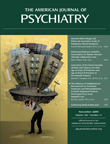Venous Thromboembolism Prophylaxis on Inpatient Psychiatry Units
To the editor: Among hospitalized patients, venous thromboembolism is a significant cause of morbidity and mortality, especially if complicated by pulmonary embolism (1) . Historically, one in three hospitalized patients at risk for venous thromboembolism has received prophylaxis (2) . In 2001, the American College of Chest Physicians recommended that hospitals develop protocols for prevention of venous thromboembolism (3) . Although many institutions have subsequently developed protocols for prevention, certain hospitalized patients are often excluded from these protocols (4) .
In 2004, our hospital instituted venous thromboembolism prophylaxis in medical and surgical, but not psychiatry, units. Our admission order sets require selection of one of the following prophylaxis options: 1) heparin, 5,000 U subcutaneous t.i.d.; 2) enoxaparin, 40 mg subcutaneous daily; 3) enoxaparin, 30 mg subcutaneous daily for patients with a creatinine clearance <30 ml/min; and 4) enoxaparin, 40 mg subcutaneous b.i.d. for patients weighing >150 kg. Withholding venous thromboembolism prophylaxis is allowed, but a stated reason is required (i.e., not indicated, contraindicated, or patient refusal). Our venous thromboembolism prophylaxis order set includes website links to information on risk factors, prophylaxis indications, and prophylaxis contraindications.
We present a case of uncomplicated venous thromboembolism discovered in an inpatient during his discharge physical examination.
“Mr. B” was an 83-year-old patient with known vascular dementia and controlled hypertension who was admitted to the psychiatry service with acute mental status changes, urinary incontinence, and gait disturbance. Computed tomography of the patient’s head without contrast showed diffuse ventricular dilatation, especially involving the supratentorial compartment, confirming the clinical suspicion for normal pressure hydrocephalus.
Neurology and neurosurgical consultants recommended a conservative (nonsurgical) approach. Daily physical therapy was immediately initiated but terminated after 2 weeks as a result of poor progress, with a recommendation for full-time wheelchair use. Behavioral symptoms and urinary incontinence were managed.
On the day prior to Mr. B’s nursing home transfer, a physical examination revealed nontender swelling in his lower right extremity. His d-dimer levels were elevated at 3,258 ng/ml. A venous ultrasound revealed a near-occlusive, acute, deep-venous thrombus involving the right popliteal vein. The patient was subsequently anticoagulated without further complication but required 2 additional weeks of hospitalization.
The purpose of the present case was to heighten awareness of venous thromboembolism among inpatient psychiatrists who care for older patients with organic mental diseases or patients with general medical comorbidities. Psychiatric inpatients demonstrating restricted mobility and who have at least one venous thromboembolism risk factor and lack contraindications for prophylaxis should be reviewed for prophylaxis. It is likely that the patient’s venous thromboembolism in the present case would have been prevented had prophylaxis been instituted. Inpatient psychiatry services, especially those managing geriatric patients, might consider incorporating venous thromboembolism prophylaxis orders routinely on admission.
1. Alpert JS, Dalen JE: Epidemiology and natural history of venous thromboembolism. Prog Cardiovasc Dis 1994; 36:417–422Google Scholar
2. Anderson FA, Wheeler HB, Goldberg RJ, Hosmer DW, Forcier A, Patwardhan NA: Physician practices in the prevention of venous thromboembolism. Ann Intern Med1991; 115:591–595Google Scholar
3. Geerts WH, Heit JA, Clagett GP, Pineo GF, Colwell CW, Anderson FA Jr, Wheeler HB: Prevention of venous thromboembolism. Chest 2001; 119(suppl):132S–175SGoogle Scholar
4. Bauer JB, Chun DS, Karpinski TA: Pharmacy-led program to improve venous thromboembolism prophylaxis in a community hospital. Am J Health Syst Pharm 2008;65:1643–1647Google Scholar



